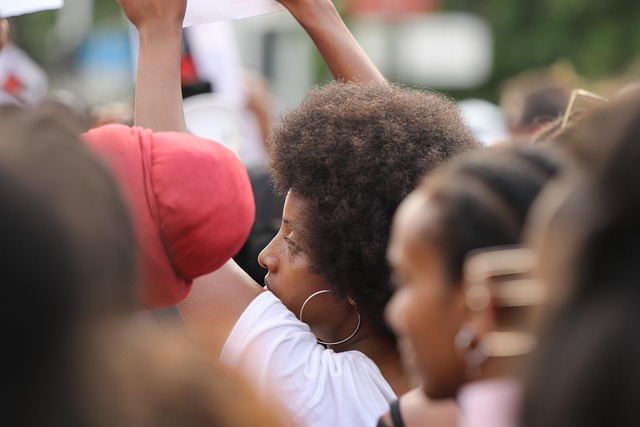As the planet warms, the planet’s oceans are rising at an accelerating pace, reshaping coastlines and redefining the boundaries of habitable land. Yet the consequences of these shifts are not shared equally. Those who have contributed least to the global greenhouse gas budget often face the most severe threats. Social justice, therefore, emerges as a central lens through which to understand and address the human impacts of sea‑level rise. In this article we explore how the growing threat of higher waters intersects with issues of equity, opportunity, and human rights, and we outline pathways toward a more just climate future.
The Intersection of Sea Level Rise and Social Justice
When coastal communities begin to experience flooding, property loss, or the erosion of cultural landmarks, the immediate concern is often about safety and survival. Yet beneath these urgent crises lies a deeper reality: the uneven distribution of resources, power, and vulnerability. Social justice in the context of sea‑level rise examines the following dimensions:
- Historical Responsibility: Nations that historically emitted the most greenhouse gases now confront the consequences of distant policy choices.
- Economic Inequality: Wealthier households can afford relocation, adaptation, or insurance, while marginalized groups may have no viable options.
- Political Representation: Low‑lying communities often lack the political clout to influence national or international climate negotiations.
- Cultural Heritage: The loss of ancestral lands erodes identities and community cohesion, disproportionately affecting indigenous peoples.
Vulnerable Communities at the Front Lines
In many regions, the most vulnerable populations are those already facing systemic disadvantages—low‑income families, ethnic minorities, and people with disabilities. The combination of inadequate infrastructure, limited access to healthcare, and a lack of political voice exacerbates their exposure to flooding. For example, informal settlements along riverbanks often lack basic drainage systems, rendering residents particularly susceptible to storm surges. These communities face a tragic cycle: as climate impacts intensify, they are forced to migrate or adapt, yet the resources to do so are scarce, deepening inequality.
Case Studies: Islands and Coastal Cities
Island nations and low‑lying coastal cities provide stark illustrations of how social justice issues unfold amid sea‑level rise. Below are key examples that demonstrate the spectrum of challenges and responses:
- Maldives: Rising waters threaten the country’s very existence, while its citizens grapple with limited options for relocation and a dependency on international aid.
- New Orleans: Post‑Katrina reconstruction revealed gaps in equitable distribution of resources, with marginalized neighborhoods receiving slower rebuilding efforts.
- Venice: Historical preservation costs have become a burden for local artisans and families, forcing many to sell property or relocate to safer grounds.
- Bangladesh: Flood‑prone regions host millions of internally displaced persons, yet many lack access to clean water and adequate shelter.
Policy Gaps and the Need for Equity
Current climate policies often prioritize large‑scale mitigation targets while overlooking the granular needs of affected communities. Urban planning codes may not reflect the realities of informal settlements, and insurance markets frequently exclude low‑income households. The lack of comprehensive data on the socioeconomic profile of at‑risk populations hampers the design of targeted interventions. Consequently, many communities find themselves at the mercy of market forces and governmental inertia, widening the equity gap in climate resilience.
Climate Justice as a Human Right
Recognizing climate action as a fundamental human right reframes the conversation from a purely economic issue to one of dignity and survival. As the UN Human Rights Council noted in its 2023 resolution, “The right to a safe, clean, and healthy environment is indivisible, interrelated, and interdependent.” This principle demands that adaptation and mitigation strategies be built on inclusive governance, transparent decision‑making, and equitable distribution of resources.
“The climate crisis is not just about temperature. It’s about the people who will be left behind if we don’t act.” — Representative of the Global Climate Justice Forum
Innovative Solutions for Inclusive Resilience
Addressing the social justice dimensions of sea‑level rise requires creative, community‑driven solutions. Some promising approaches include:
- Community‑Led Re‑Landscaping: Employing mangrove restoration and natural barriers designed by local residents to protect shorelines while providing employment.
- Participatory Insurance Schemes: Creating micro‑insurance products that are affordable, culturally appropriate, and managed by local cooperatives.
- Digital Platforms for Vulnerability Mapping: Crowdsourced data tools that allow residents to report flood risks, informing targeted infrastructure upgrades.
- Climate‑Resilient Housing Initiatives: Modular, flood‑tolerant structures built with local materials, offering affordable options for low‑income families.
The Role of Global Governance
International frameworks such as the Paris Agreement and the United Nations Sustainable Development Goals set the stage for collective action, yet they often lack enforceable mechanisms for social justice. Strengthening accountability requires binding commitments to fund adaptation, ensuring that financial flows reach the most affected populations. Moreover, global governance should embed equity metrics—tracking how resources are allocated and outcomes measured across different socioeconomic groups—to guarantee that climate finance does not become a tool for deepening existing disparities.
Call to Action for Communities and Governments
Concrete steps are needed at all levels of society to align climate action with social justice. The following actions should become priorities for policymakers, civil society, and private actors alike:
- Integrate equity assessments into all climate adaptation planning.
- Guarantee that relocation programs include cultural sensitivity and long‑term livelihood opportunities.
- Establish transparent, community‑managed funding mechanisms for resilience projects.
- Strengthen legal protections for land rights, especially for indigenous and marginalized groups.
- Promote inclusive public participation in climate negotiations, ensuring that voices from the most vulnerable are heard and respected.
Sea‑level rise is an inevitable outcome of our current trajectory of greenhouse gas emissions, but the human costs can be mitigated through a deliberate focus on social justice. By recognizing that the burden of climate change falls unevenly, we can design policies and interventions that protect the most vulnerable and foster resilient, equitable communities. The path forward demands courage, collaboration, and an unwavering commitment to ensuring that climate action is truly just for all.




